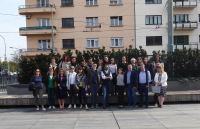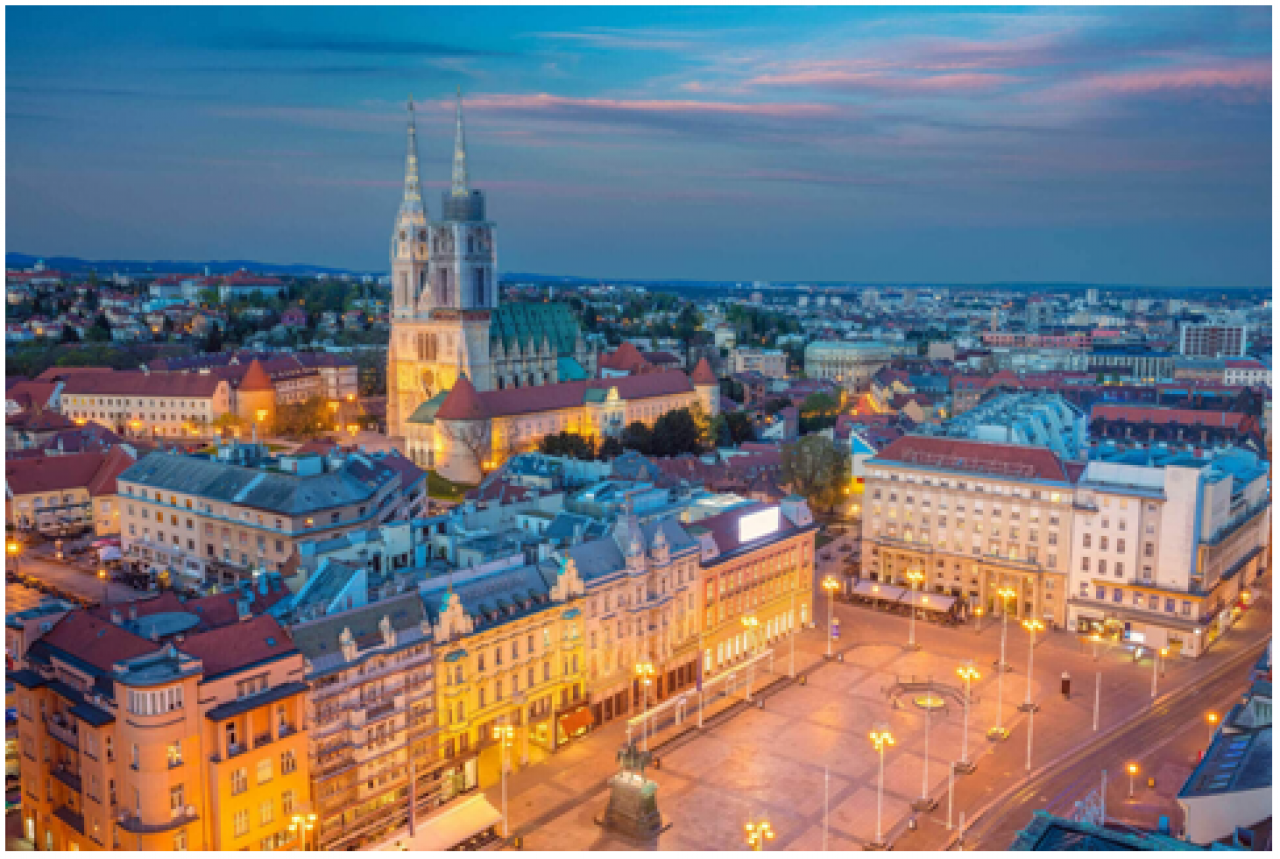
“Indeed, the move to connect public subsidy and private compliance must be understood in the context of the post-war history of urban redevelopment initiatives, most of which have been considered failures. A thorough history of these programs is beyond this chapter, but the litany of criticisms is familiar: Urban redevelopment has relied too heavily on private-side investment; it has emphasized displacement and gentrification over reinvestment; it has lacked citizen participation or neighbourhood input; and it has been riddled with patronage, incompetence, and distribution to favoured groups. Mostly, however, urban redevelopment policy has been unsuccessful.” ― Richard Schragger
The City of Zagreb, the City Office for Strategic Planning and City Development, was selected within many European cities for the implementation of the European project Urban Regeneration Mix, whose main premise is how to improve the regeneration process through participation, which is implemented through funding from the European program process through participation, which is implemented through funding from the European program URBACT III.
As the part of the Urban Regeneration Mix project, we analysed various brownfield locations, which occupy large city areas in the city centre and wider, and for which we need to find adequate use through the city procedure. The Block Badel area is a space that has gone through various stages over a hundred years, from an alcoholic beverage factory founded in 1917 and a year later a spirits factory and a yeast factory, to a valuable legacy of industrial architecture that needs to preserve in this context. 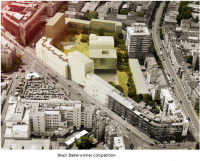
Architectural competition was held for the Block Badel area where the goal and purpose was to obtain a quality urban, design, functional and economical solution that will form a new modern part of the city centre and contribute to the value of the wider area, while recalling the historical development of this area. Ultimately, the goal of the competition was to create a new identity of this part of the city concerning business, tourism, cultural and artistic events, but also a place of quality life of its current and future residents. There were 242 works submitted to the competition, and the jury awarded the first prize to the Portuguese office of Pablo Pita Architects for the highest quality of urban design. The jury considered that the proposed concept, in sober architectural language, is in line with the character of the downtown of Zagreb, with the created balance between the built outer perimeter and the inner courtyards on two levels.
The existence of a meaning and appearance of a rich structure such as the old distillery determined the approach. This old distillery is the centre of URM project implementation all together with another new building that is planned to be build next to the existing one. That marks the space and opens the possibility of developing a new structure that establishes new urban habits and creates new urban value. Zagreb's downtown has urban stability, rooted in a clearly defined block morphology. According to the award-winning project, urban rules were drafted, a public and professional debate was held, and in December 2018, the City Assembly of the City of Zagreb passed a Decision for the implementation of the Badel Block city project.
Urban Regeneration in Zagreb
This is where the Urban Regeneration Mix project took the lead in the implementation and realization of the Block Badel project. We were slowly going through the first year of the project implementation in 2019. After we formed a local group, we started preparing the participation process and the participation of citizens in the area of the Badel Block was carried out.


Thus, we organized workshops, surveys and citizen participation during the past year and came up with quality proposals that are an integral part of public-social content, which is approximately 10-15%, according to the Decision and accepted urban rules. The purpose of the sociological analysis within the Urban Regeneration Mix project is to propose the basic determinants of the revitalization the Badel Block (Vlaška-Šubićeva-Martićeva-Derenčinova) aimed at raising the quality of life of the local community and youth, while considering the potential of activating the wider area at the local community level. The aim of the sociological analysis and participatory activities was to define guidelines for public and social content in the block. Various methods were used to collect relevant information on quality of life, accessibility of public and social facilities and problems of everyday life in the neighbourhood.
The participation started analysing associations and local committees of the city districts (Down Town, Upper Town and Maksimir), including other citizens. Primarily we were concentrated on young people (students and young professionals) as current and potential users of the space and gaining a broader picture of the needs of citizens and the revitalization potential of that specific block to the wider level of the city. The participation plan was based on focus group and interdisciplinary workshop with students and young professionals, interviews with residents and analysis of official spatial data for the City District of Down Town, Upper Town and Maksimir.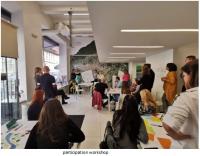
In addition, official statements were requested from associations active in the area of City Districts, statements of local committees surrounding the Badel Block area and statements of city offices conforming the public space and needs in this block. Throughout the analysis and participatory activities, young people are placed in a special focus because they are rarely involved in shaping the vision of the future development of the city, and they are the future of the city. In accordance with the idea of URBACT, we wanted to explore how young people see the possibility that the revitalization of the Badel Block can contribute to the revitalization of the neighbourhood in which it is located, but also raise the quality of public and social facilities in the wider city of Zagreb. Over 100 citizens directly participated in some activities of which 31 young people in the workshop and focus group. Most of them were graduate students from the Academy of Dramatic Arts, Faculty of Architecture, Agriculture and Philosophy and Design Studies at the Faculty of Architecture; a small part consisted of postgraduate students from these fields and young professionals who recently graduated from these faculties. There were 11 residents who participated through interviews (interviewees were selected to represent different age groups - young, middle age, mature age; and have different family and marital status - singles, families, parents of young children, and educational and economic status - unemployed, students, employees and retirees.
Complications and challenges
The contents that young people think they lack, and recognize as important, can be the revitalization and development potential of the Badel Block, a neighbourhood and the expanded city area. There were many challenges
During the implementation of the project, we encountered many challenges that were mainly concentrated on the relationship with the residents of the narrower and wider scope of the location. At first, there was a problem with the associations that inhabited the area of the old factory and over the years manipulated the city administration so that it could not dislocate them from that area which they also did not even adequately pay.
Everyone is aware that tremendous numbers of people concentrate in city downtowns and that, if they did not, there would be no downtown to amount to anything--certainly not one with much downtown diversity.— Jane Jacobs
However, at that time, the well-organized Urbact local group managed to reach a solution through open communication, which resulted in the engagement of an external associate, a sociology professor, who conducted a sociological study/participation in the block. Much has been learned from this process and clear results and information have been obtained for future spatial planning. The procedure of implementing such a project is very complex. It requires a lot of discussion and work that can be accepted but also does not have to. That is why it was For this reason, we focused on developing guidelines that we would implement next year in the tender documentation for public buildings. Through the process of drafting the guidelines, we took into account all the knowledge and all the materials we produced in that period in order to get the most accurate information in creating space for the benefit of the city and its population.
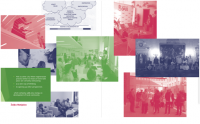
URBACT support
Thanks to the very dedicated main partner of the project as well as the expert, we did not lack information and help. During the implementation, a strong partnership was developed, and assistance was always provided to us in the short term. The City of Zagreb benefited the most from the visit to the City of Toulouse, which had an elaborate procedure for the development of larger urban areas. In the case of Toulouse, it was land that was once a military space. Through clear procedures, where part was well-developed citizen participation, the city of Zagreb gained insights that benefited it. It is interesting that each project partner had something in its implementation that was useful for upgrading knowledge in the case of the city of Zagreb, although our themes and size of the projects differed. Through constant meetings and discussions, a lot has been clarified and the city of Zagreb has managed to implement a lot in its implementation and business, which we consider the greatest benefit of this network.
Conclusion
The importance of exchanging experiences between cities in this way is extremely important for their development. On the example of other cities, their attempts and achievements, much can be learned and responded to in time and in the case of some crucial projects. Such an experience is useful because it can be learned from others mistakes so that you do not need to repeat them, but more importantly, it can be learned even better from a quality procedure and successful implementation.
